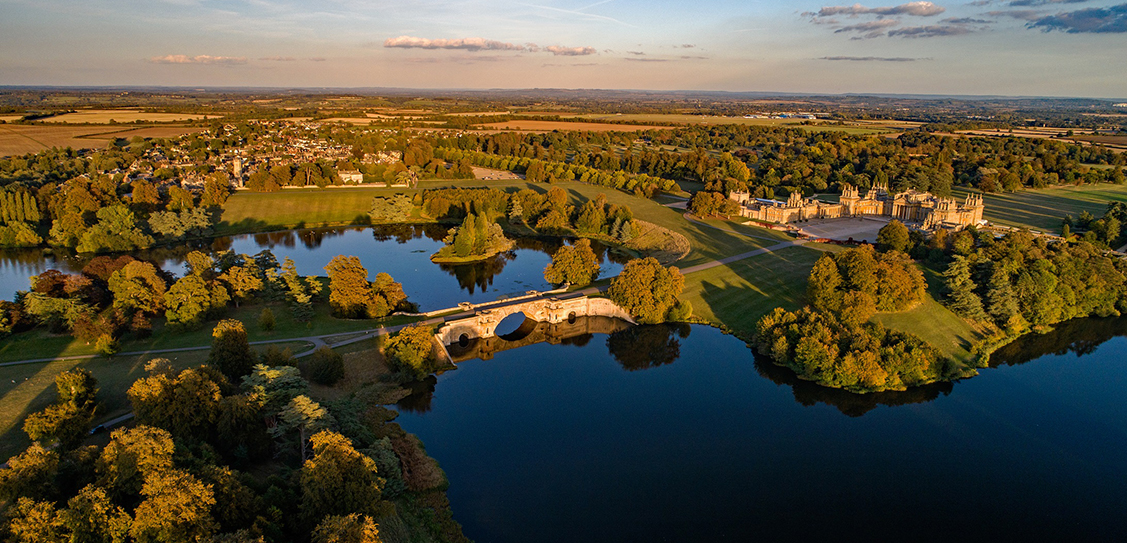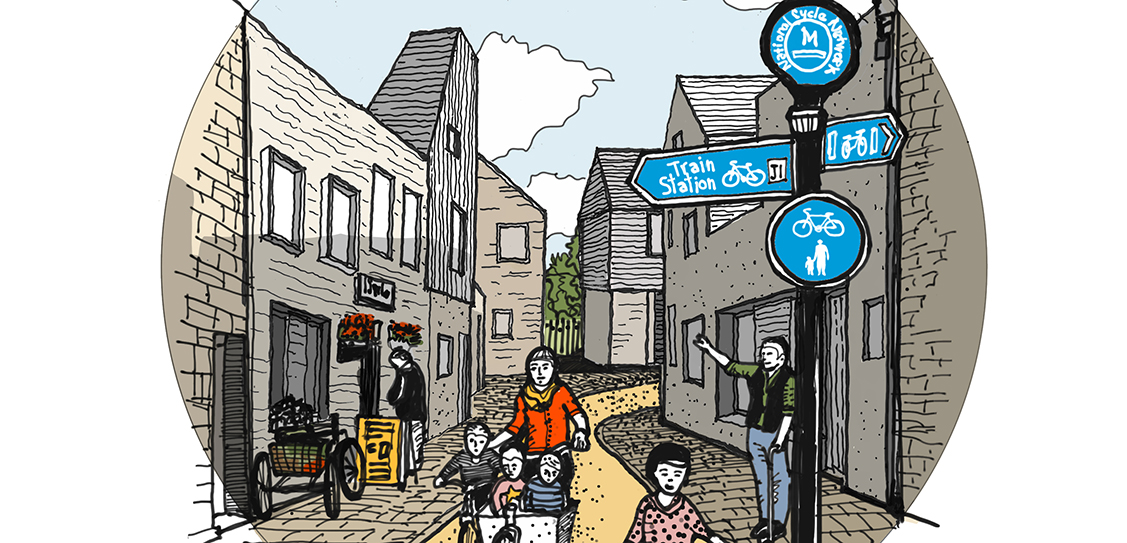The team is working closely with the Oxfordshire estate to re-imagine a greener future based around people, places, sustainable transport and new technology.
The VeloCity vision was borne out of a winning proposal for the National Infrastructure Commission’s Cambridge to Oxford Connection ideas competition in 2017, and subsequently won the inaugural William Sutton Prize 2018 for Excellence in Social Housing Design and Placemaking, which has funded extensive research and consultation over the last two years.
Working with Blenheim Estate Land and talking with local people in the area has shown us that villages need to work together to tackle pressing issues around isolation, road congestion and loss of local shops, pub and schools.
Our strategy is a game-changer and looks to link villages with new walking and cycling routes so that collectively they can grow to a capacity that brings back important community facilities and reduces the need to travel further afield by car, thereby making more sustainable places to live and work.
The VeloCity approach focuses on reinvigorating the rural landscape, aiming to address some of the most critical issues facing the countryside today, including loss of biodiversity, social and health inequality, lack of connectivity and declining community facilities such as schools, shops and pubs.
The emerging vision for Blenheim Estate Land is a place-based vision which proposes incremental change over three decades.
It is being developed at a time when the world is rethinking how we future-plan the places where we live and work, in light of the Covid-19 pandemic.
It seeks to fulfil the aspirations and objectives set out in the Oxfordshire 2050 Plan, a partnership between four districts and Oxford City to create a framework for future decision-making on big issues like development, infrastructure and placemaking.
To achieve a zero carbon future by 2050 requires us to think differently about how we live and work and move around, the design of our homes and the way in which services are delivered. It requires creative and holistic thinking.
Our VeloCity proposition and the way we have applied our thinking to the estate of Blenheim and its surrounding villages will, we envisage, provide an opportunity to enable rural communities to respond positively to the environmental, social and economic issues we are all now experiencing.
West Oxfordshire District Council and Oxfordshire County Council have both signed up to the climate emergency declaration, pledging to achieve zero carbon by 2050.
Working towards these targets, Blenheim Estate Land is aiming to set a precedent as the UK’s first estate to demonstrate carbon-negative land management.
Blenheim Estate Land is responsible for the renowned stately home Blenheim Palace (home of the Duke of Marlborough and birthplace of Winston Churchill), 2,000 acres of parkland (a World Heritage site), as well as a working farm and lands extending to eight villages on the fringes of the palace.
As steward of the land, Blenheim Estate Land has been intrinsically linked to the communities around it, providing farmland, woodlands and homes, and taking responsibility for the social, environmental and economic impact on its communities.
VeloCity’s emerging vision forms a key element of Blenheim Estate Land’s new strategy, which launched in November 2019, offering a revolutionary approach to managing the estate’s 12,000 acres of land and valuing its natural capital.
The emerging vision has the potential to secure significant environmental benefits - reducing car dependency, congestion and pollution - but also significant social, economic and health benefits, by encouraging walking and cycling, strengthening village life and supporting local businesses.
Central to the vision is the VeloCity concept of a compact, cohesive and integrated village cluster for the wider Blenheim Estate.
The estate provides an ideal case study location to apply the five key principles which underpin the VeloCity proposition:
- People over cars: creating new movement networks
- Compact, not sprawl: keeping the special character of villages
- Connected, not isolated: linking villages with shared resources, to benefit everyone
- Opportunity over decline: unlocking land for new places to live and work
- resilient, not fragile: promoting sustainable environments, health and wellbeing
The proposals focus on the concept of a thriving village cluster, connecting the eight villages touched by the estate land - Bladon, Cassington, Church Hanborough, Combe, Long Hanborough, Wootton, Stonesfield and Woodstock - to build a more sustainable and carbon-negative future.
The village cluster would include places to meet or work and reduce the need to travel for work and services.
Any new homes envisioned by Blenheim Estate Land will be low carbon, where possible using local materials sourced through local supply chains, building on traditional village character and forms.
The strategy will also include an integrated network of bridleways and cycle routes to connect existing and new villages, transport interchanges, places of work, schools and other services and destinations, combined with transport sharing options and local delivery initiatives using electric vehicles.
The last few months have really demonstrated what a different future could look like. We have recognised the value of green spaces on our physical and mental wellbeing. Working patterns have changed, streets have been given over to people and we are connecting more with our local community.
This is the essence of the VeloCity principles and we are excited to be working with Blenheim Estate Land to demonstrate how they can be delivered to create sustainable, healthy and inclusive rural communities on their estate.
Nurturing the existing landscape and enabling it to actively provide for the food and recreational needs of the estate’s communities in a more proactive and symbiotic manner is also a major driver of the emerging vision.
The team will be submitting its place-based vision to the Oxfordshire 2050 Plan in the first stage of a long process that will involve extensive consultation with local planning representatives, local residents and business owners.


